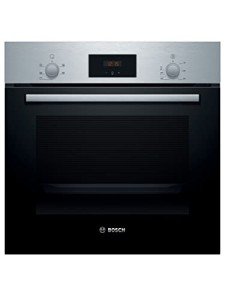The Secret Secrets Of Single Built In Oven
페이지 정보
작성자 Spencer 댓글 0건 조회 5회 작성일 25-06-30 19:36본문
The Comprehensive Guide to Single Built-In Ovens: Features, Benefits, and FAQs
Intro
In modern kitchen areas, the combination of devices is key to achieving a streamlined design. Among these home appliances, the built-in oven sticks out as a staple for daily cooking. In specific, single built-in ovens are acquiring appeal due to their space-saving style and efficiency. This post explores the functions, advantages, and typically asked questions about single built-in ovens, assisting homeowners make informed options.
What is a Single Built-In Oven?
A single built-in oven is a cooking home appliance developed to be embedded within cabinets, providing a seamless appearance that complements the kitchen's aesthetic. Unlike freestanding ovens, built-in variations use a range of features and designs that cater to modern cooking needs.
Key Features of a Single Built-In Oven
Single built-in ovens featured a variety of functions that enhance performance and user experience. Here are a few of the most essential attributes:
| Feature | Description |
|---|---|
| Size and Capacity | Usually varies from 24 to 30 inches in width; ideal for different kitchen sizes. |
| Cooking Modes | Several settings, consisting of convection, baking, broiling, and in some cases steam cooking. |
| Controls | Digital touch controls or conventional knobs with exact temperature level settings. |
| Self-Cleaning Options | Numerous models include self-cleaning functions for much easier maintenance. |
| Energy Efficiency | Created to consume less energy, frequently with an A+ energy score. |
| Security Features | Includes child locks, cooling systems, and temperature sensors. |
| Style Options | Readily available in various surfaces (stainless-steel, black, and so on) and styles (modern, classic). |
Benefits of Using a Single Built-In Oven
The adoption of single built-in ovens offers numerous benefits:
- Aesthetics: They develop a modern and refined look in the kitchen, blending effortlessly with cabinetry.
- Space-Saving: Ideal for smaller sized kitchens, they are created to optimize area by being built into walls or cabinets.
- Increased Functionality: Many designs include advanced cooking innovation such as clever functions that enable remote control through smart device.
- Easy to Use: With instinctive controls, built-in ovens are easy to use and appropriate for both amateur and skilled cooks.
- Improved Cooking Performance: Convection models circulate hot air for even cooking results.
Popular Brands and Models
A number of brand names dominate the single built-in oven market, each offering distinct functions to accommodate customer preferences. Here are some significant ones:
| Brand | Popular Models | Key Features |
|---|---|---|
| Bosch | HBN8451UC, HBL8453UC | European design, convection heat, Wi-Fi connection. |
| Electrolux | E30SO75GPS, E30SO75PPS | Variations in size, advanced barbecuing capabilities. |
| Samsung | NV51K6650SG | Double convection, wise technology, flexible cooking modes. |
| Whirlpool | WOS51EC0HS | Budget friendly, trustworthy, self-cleaning features. |
| LG | LWS3063ST | Smart technology, air fry mode, streamlined looks. |
Installation Considerations
Setting up a single built-in oven includes specific considerations:
- Measurement: Ensure that the space allotted is compatible with the oven's dimensions.
- Ventilation: Adequate air flow needs to be maintained for safety and performance.
- Electrical Needs: Check voltage requirements and make sure appropriate electric outlets are available.
- Professional Installation: While some homeowners may pick DIY, employing a specialist can alleviate installation concerns.
Often Asked Questions (FAQs)
How much space is required for a built-in oven?
- A built-in oven generally requires a designated area that varies by model, normally from 24 to 30 inches in width. Constantly refer to the producer's specs for accurate measurements.
Can I set up a built-in oven by myself?
- While some may attempt a DIY installation, it is often advised to work with a professional to ensure appropriate fitting, electrical connections, and ventilation.
Are single built-in ovens more expensive than freestanding models?
- Normally, yes. Single built-in ovens tend to cost more due to their design, installation, and extra features.
What are the differences in between convection and regular ovens?

- Stove have a fan that flows hot air throughout, resulting in even cooking. Conventional ovens depend on radiant heat, which may result in hot areas and irregular cooking.
What upkeep is needed for a built-in oven?
- Regular cleaning, making sure vents remain unblocked, and keeping track of functions. Lots of designs use self-cleaning alternatives, which simplify maintenance.
Single built-in ovens represent a merging of design, convenience, and performance in modern kitchen areas. With a plethora of functions and designs available, these ovens cater to various cooking needs and choices. Whether you are a hopeful chef or an occasional home cook, buying a well-suited single built-in oven can enhance your cooking experience while elevating your kitchen's aesthetic. Cautious factor to consider of features, installation requirements, and maintenance will cause a gratifying financial investment in this important kitchen device.
댓글목록
등록된 댓글이 없습니다.